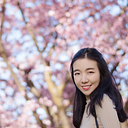Essential Sources for All Creatives
Reading Recommendations for Designers and Editors
As a content developer with a background in Visual Arts and English Literature, I enjoy reading and learning. I believe investing in yourself, especially in education, makes one a more well-rounded world citizen. Psychology, user experience design, and writing are everywhere in our work and personal life.
I purchased four books towards the end of 2021, and I’m here to share my thoughts.
1. Palette Perfect by Lauren Wager
Palette Perfect is a practical tool for all designers and anybody looking to understand what colors bring to human emotions. There are more than 900 color combinations in the book, and they made me reflect on my previous projects, including graphic headers, printed flyers, and personal branding.
Whether you are a UX designer or a fashion designer, it’s essential for you to pay attention to the possibilities in colors. As an artist and a writer, I see the power in words and colors. They work together to create emotions, bringing different atmospheres and serving various purposes.
2. The Color Bible by Laura Perryman
This is another book on color. As human beings, we rely on visual cues, and many of us call ourselves visual learners. I liked the book because it included a brief history of each color. This was intriguing for the writer part of me, always tracing back to where it all began. It’s always fascinating to learn what colors can do, creating psychological and physiological effects.
3. The artful edit by Susan Bell
I was having a conversation earlier today with my team leader on editing. Could writers possibly self-edit? What is the importance of editing and proofreading? We both agreed a good writer should not be afraid of critical comments and feedback from editors, as they are essential to help advance the writing. Coming from a traditional English Literature background, I believe in workshops and peer review. That said, I maintain curious about the role of editing and other perspectives.
I came across The Artful Edit, a book exploring the art of editing. The author does not eliminate the need for an outside editor, but she believes writers could learn to edit themselves better. Bell wrote, “[the writers] will be working with texts at a more advanced stage, and their work will be less an act of excavation than one of refinement” (Bell, 5). She talks more about the pleasure of editing yourself and calls it “more an attitude than a system” (Bell, 6.) I found the idea interesting as it challenged my editorial consciousness. It was good for me to take a step back to see how editing has evolved — recommended for all writers!
4. The Copyeditor’s Handbook by Amy Einsohn and Marilyn Schwartz
This is a guide for book publishing and corporate communications. Having years of editing experience in journalism, creative writing, and academic papers, I found the book insightful. It is an excellent resource for both new editors and experienced ones to refresh their skills on the craft of copyediting.
I’ve led writing workshops and worked with young talents in the past. Looking back, that was when I found many of my students struggled with different style manuals, especially when preparing texts for digital formats. The book includes a checklist of editorial preferences, new technologies, and entertaining brief history of punctuation marks.
What are your experiences in using a creative approach at work? In your perspective, what makes a good design? Have you worked with editors in the past?
I’d love to hear your thoughts. Let’s connect!
My email: ahcpoetry@gmail.com
